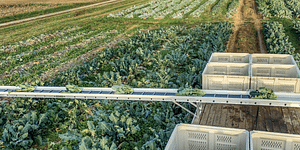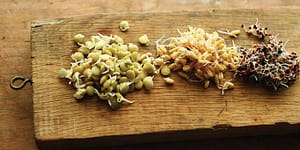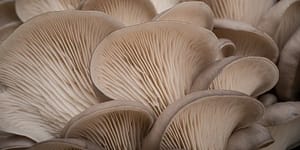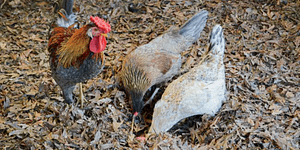Designing Leather Goods: Cutting & Shaping

In a personal investigation into ethical and traceable leather, fashion designer Alice Robinson begins a ground-breaking journey into the origin story of leather and its connection to food and farming. Keep reading to learn more about her process of cutting & shaping leather to create handbags, shoes, clothing, and more!
The following is an excerpt from Field, Fork, Fashion by Alice V Robinson. It has been adapted for the web.
Cutting & Shaping Leather
‘Leather has a 3D memory, if you cut the shoulder of a cow, it will return. The power of the leather is stronger than the will of the designer’, words imparted years earlier by a production manager at a luxury Italian manufacturer, a warning that still rang true.
‘We roughly throw away half of the leather we order, because of the way in which we need to cut the specific pieces.’ I thought of this as I looked at the hide. It was evident some sections had more consistency than others and these areas only extended so far.
The Structure of Leather
Before I could design, I needed to consider how the structure of the leather changed within each side. Often in leather production these changes in fibre structure are distinguished by dividing the hide into sections, most commonly by the shoulders, backs (bends) and bellies, as each have a distinctively different feel.
I had previously seen these sections cut off before the tanning process began. First to go was the belly.
Shaping: Starting the Tanning Process
A continuous vertical strip cut from the side of the hide.Much like our bellies, it is softer and looser than the rest of the body. This sort of fibre structure makes it more susceptible to wrinkling once in the form of leather and so is less suited to applications where it may need to be stretch resistant.
With the belly removed from either side, the hide begins to look more rectangular.
Next to be separated is the shoulder, a horizontal division across the upper half of the body. Less dense in its fibre composition and sitting at the base of the neck, it is more flexible because of the head movements. Its consistent thickness makes the shoulder easy to work with and a popular part of the hide for bag making.
The piece that remains is called the butt – or if split again down the spine, each piece is called a bend – it has a tightly compact fibre structure making it the strongest and most consistent part of the hide. It is also the largest cut, almost rectangular apart from the bottom end tapering in the centre where the tail once was.
Recommended Reads
The Future of Sustainable Fashion: A “Farm-to-Closet” Vision
Recent Articles
Oxeye daisies are one of the most important plants for pollinators including beetles, ants, and moths that use oxeye daisies as a source of pollen and nectar. Instead of thinking about removing a plant like oxeye daisy, consider how you can improve the fertility and diversity of habitat resources in your home landscape, garden, or…
Read MoreSo you want to start reaping your harvest, but you’re not sure where to start? Learn how to break down the options of harvesting tools!
Read MoreWhat’s so great about oyster mushrooms? First, you can add them to the list of foods that can be grown indoors! They are tasty, easy to grow, multiply fast, and they love a variety of substrates, making oyster mushrooms the premium choice. The following is an excerpt from Fresh Food from Small Spaces by R. J.…
Read MoreEver heard the phrase, “always follow your nose?” As it turns out, this is a good rule of thumb when it comes to chicken manure. Composting chicken manure in deep litter helps build better chicken health, reduce labor, and retain most of the nutrients for your garden. The following is an excerpt from The Small-Scale Poultry…
Read More










